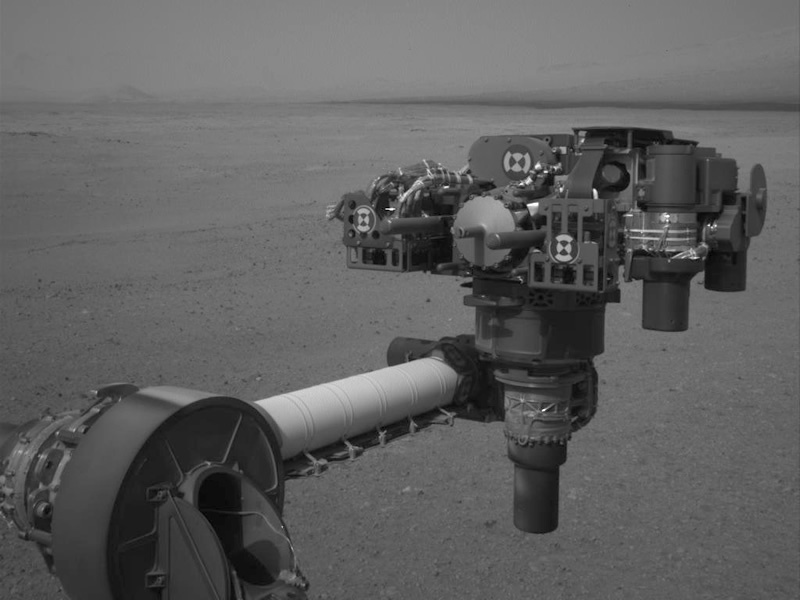NASA's Curiosity Studies Mars Surroundings, Nears Drive
NASA's Curiosity Studies Mars Surroundings, Nears Drive
August 21, 2012
PASADENA, Calif. - NASA's Mars rover Curiosity has been investigating the Martian weather around it and the soil beneath it, as its controllers prepare for the car-size vehicle's first drive on Mars.
The rover's weather station, provided by Spain, checks air temperature, ground temperature, air pressure, wind and other variables every hour at the landing site in Gale Crater. On a typical Martian day, or "sol," based on measurements so far in the two-week old mission, air temperatures swing from 28 degrees to minus 103 degrees Fahrenheit (minus 2 to minus 75 Celsius). Ground temperatures change even more between afternoon and pre-dawn morning, from 37 degrees to minus 132 degrees Fahrenheit (3 to minus 91 Celsius).
"We will learn about changes from day to day and season to season," said Javier Gómez-Elvira of the Centro de Astrobiología, Madrid, Spain, principal investigator for the suite of weather sensors called the Rover Environmental Monitoring Station (REMS).
Within a week or so, daily Mars weather reports from Curiosity will become available at: http://cab.inta-csic.es/rems/marsweather.html or bit.ly/RzQe6p.
One of the two sets of REMS wind sensors is not providing data. "One possibility is that pebbles lofted during the landing hit the delicate circuit boards on one of the two REMS booms," said Curiosity Deputy Project Scientist Ashwin Vasavada of NASA's Jet Propulsion Laboratory, Pasadena, Calif. "We will have to be more clever about using the remaining wind sensor to get wind speed and direction."
An instrument provided by Russia is checking for water bound into minerals in the top three feet (one meter) of soil beneath the rover. It employs a technology that is used in oil prospecting on Earth, but had never before been sent to another planet.
"Curiosity has begun shooting neutrons into the ground," said Igor Mitrofanov of Space Research Institute, Moscow, principal investigator for this instrument, called the Dynamic Albedo of Neutrons, or DAN. "We measure the amount of hydrogen in the soil by observing how the neutrons are scattered, and hydrogen on Mars is an indicator of water."
The most likely hydrogen to be found in shallow ground of Gale Crater, near the Martian equator, is in hydrated minerals. These are minerals with water molecules, or related ions, bound into the crystalline structure of rocks. They can tenaciously retain water from a wetter past after all free water has gone.
Curiosity will soon have a different patch of ground beneath it. Today, the six-wheeled rover wiggled its four corner wheels side to side for the first time on Mars, as a test of the steering actuators on those wheels. This was critical preparation for Curiosity's first drive on Mars.
"Late tonight, we plan to send Curiosity the commands for doing our first drive tomorrow," said Curiosity Mission Manager Michael Watkins of JPL.
The Mars Science Laboratory spacecraft delivered Curiosity to Mars on Aug. 5, PDT (Aug. 6, EDT). In a two-year prime mission researchers are using the rover's 10 instruments to assess whether the selected study area has ever offered environmental conditions favorable for microbial life and for preserving evidence about whether life has existed.
The mission is managed by JPL for NASA's Science Mission Directorate in Washington. The rover was designed, developed and assembled at JPL, a division of Caltech.
(credits: JPL - NASA - All rights reserved)

